
Russian walking robots
There is a wide range of possible applications for mobile robotic platforms that move due to foot-shaped supports. For example, many countries are working on military-grade robotic systems.
In Russia, this rather interesting concept is also not ignored, and developers periodically demonstrate various projects to the public, which, however, have not progressed beyond tests and demonstrations at exhibitions so far.
The first problems
The first ideas on walking robots appeared relatively long ago and the advantages of such solutions are well known to many — the chassis of robots equipped with foot supports provides them with high mobility, as well as decent maneuverability on a wide variety of terrain. Such platforms can be used both for moving goods and for equipping with special equipment, including military ones.
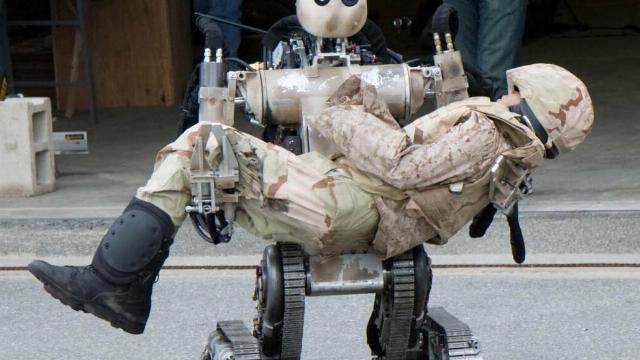
Robot
At first glance, the walking chassis is a fairly simple design, but this is far from the case — the legs of such a product have a very complex mechanism, which is provided by a whole set of sensors and actuators. Moreover, special software is required that will process the information coming from the sensors, monitor the operation of all systems and, accordingly, control the movement of the robot. For a long time, it was almost impossible or extremely difficult to create such a self-propelled platform. The situation began to change only in the last few decades, when microelectronics and other components became more "advanced". Due to this, it was possible to create mechanisms and control systems with the required size and necessary speed. In particular, the first walking robots with four or six "paws" appeared, which went through many stages of their development — from the first experimental tests to actual operation in some industries. Of course, they also began to develop military-grade robotic systems.
Predator Combat Robot
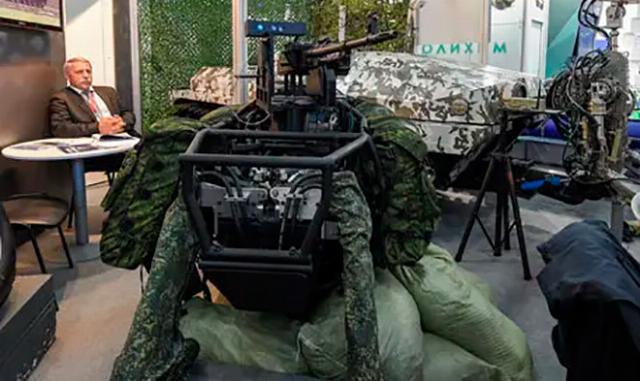 |
| Russian military walking robots. |
| Source: techcult.ru |
The first such walking robot of domestic development was the Predator, created in the depths of Android technology with the support of a special scientific center of the Ministry of Defense. Moreover, this product, which specialists began working on back in 2015, is modestly called the Predator biomorphic robotic complex and was even shown during the Army-2016 forum. The Predator is designed to carry cargo and various weapons necessary to support fighters, has a four-legged design, and its weight is about 200 kg with a length and height of 2 and 1 meter, respectively. On flat terrain, it is capable of transporting cargo weighing up to 200 kg, and on rough terrain — up to 80 kg. A hybrid power plant consisting of an internal combustion engine, a generator, and a hydraulic pump is responsible for the movement of the Predator. Electricity from the generator goes to the control system and, if installed, to power the weapons, and a hydraulic system is required for the legs to function.
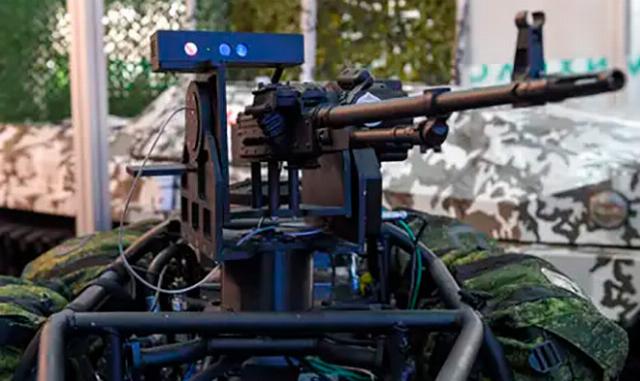 |
| The Predator's combat module. |
| Source: Open Sources |
According to the developers, the Predator's autonomy reaches a day, and it can operate both from the internal combustion engine in normal mode and from on-board batteries, if necessary, to work silently. The robot's movement speed reaches 15 km/ h and it is not hindered by half-meter moats and walls, as well as stairs with a 30-degree slope. It is already clear that the Predator can carry various guided combat modules. For example, at Army-2016 they showed its modification, including a PKTM machine gun, but they also talked about the possibility of installing a more serious "Cord". In fact, Predator became a test platform on which new solutions and technologies were being developed — it was not originally going to be brought to the stage of mass production. For the same reason, apparently, they stopped showing him at exhibitions.
Dog Fighting Robots
In recent years, foreign companies and startups have begun to actively work on the creation of compact walking robots, characterized by their light weight and four legs. At the same time, the developers do not abandon attempts to mass-apply the so-called robobacks in practice. Of course, there was a military trend here, too. In Russia, over the past few years, combat complexes based on robobacks have been shown more than once, but almost all of them had a ready-made foreign-made platform, which was equipped with domestic weapons or reconnaissance equipment.
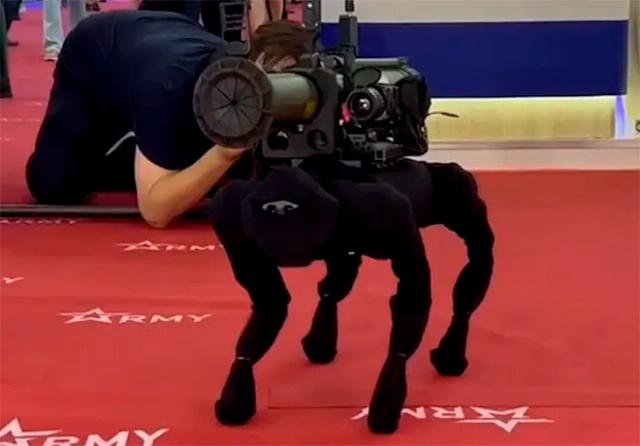 |
| The Predator's combat module. |
| Source: Open Sources |
In particular, such projects demonstrated the possibility of equipping walking platforms with machine guns, grenade launchers or optoelectronic stations. They were distinguished by their high maneuverability and mobility, which allowed them to solve tasks related to supporting units on the battlefield. Robobacks armed with machine-gun and grenade launchers or equipped with reconnaissance equipment also remained in the form of demonstration samples shown at exhibitions and test platforms undergoing testing at landfills. This is due to the fact that, while there are many advantages, robot dogs have a lot of disadvantages. Moreover, there are noticeably more disadvantages here.
Combined solutions
Another interesting project from the series of walking robotic complexes was the development from engineers of "Applied Robotics", which was named "Spider" and was even demonstrated at last year's "Army-2024". From the very beginning, the Spider was created as a robotic platform with maximum possible mobility. A combined design, including legs and traditional wheels, was chosen as the Spider's propulsion system. The robot's movement over uneven terrain and overcoming various obstacles is provided by six legs with alternating movement of three legs, which provides movement speeds of up to 10 km/h. For roads and flat surfaces, the Spider received an additional wheel propulsion system, which includes four wheels with motors located on the front and rear pairs of foot supports. That is, if necessary, the robot bends its legs and stands on wheels, which significantly improves its maneuverability and speed characteristics.
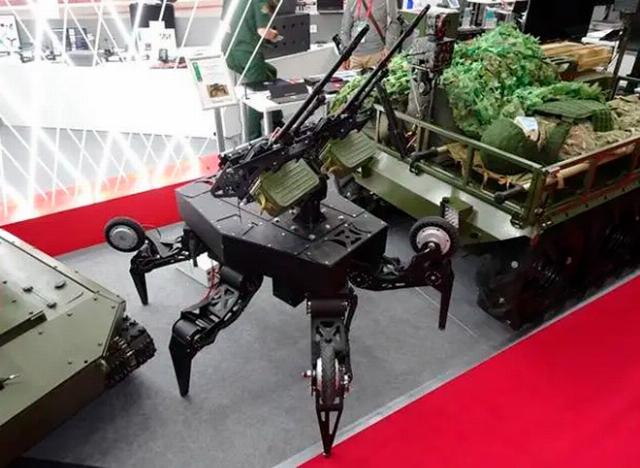 |
| The Spider combat robot. |
| Source: Open Sources |
Just like the Russian robobacks from Applied Robotics, the Spider robot can transport goods or be equipped with modules with automatic weapons. For example, during the "Army-2024" the robot was shown with two PKTM machine guns, but it can carry other weapons.
Current results
As a result, the Russian defense industry and the research centers of the Ministry of Defense do not lose interest in sufficiently promising walking robotic platforms and continue to actively work on research in this area, as well as on the creation of prototypes of such equipment. At the moment, the developers have already created, tested and shown several military models of walking robots, which differ in their design features and technical specifications. Moreover, all well-known projects are aimed at creating truly universal robotic complexes capable of transporting cargo or carrying modern weapons. Tests of samples of such robots in a variety of conditions show quite decent capabilities of walking complexes, but they are practically not interested in a potential customer in the person of the Russian military department today. However, it remains to be hoped that soon everything will change and walking robots will begin to enter the units of the Russian army.
Max Antonov
